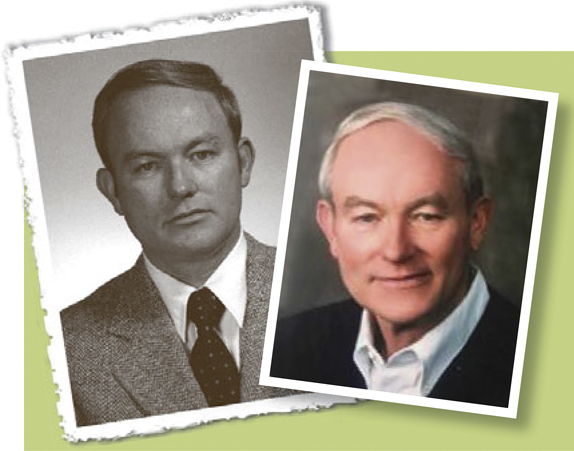Frank Welch Clinard Jr., former technical staff member at Los Alamos National Laboratory (LANL), passed away in Los Alamos at the age of 83 on August 30, 2016. Frank was born and raised in Winston-Salem, N.C. He attended North Carolina State University and earned a bachelor’s degree in mechanical engineering in 1955 and a master’s degree in metallurgical engineering in 1957. Frank then moved to Stanford University, where he earned a PhD degree in materials science in 1964.
He began his career at LANL in 1964 and retired in 1989. By the late 1970s, Frank had established himself as a recognized world authority on radiation-damage effects in materials, especially in ceramics for use in nuclear fission and fusion applications. For many years, Frank led a US Department of Energy-funded team of researchers at LANL in experimental investigations of radiation effects in nonmetallic and metallic solids.
His research led to many seminal ceramics research findings on topics including fast-neutron-induced microstructural evolution and swelling in model oxide ceramics (both single and polycrystals), along with corresponding changes in important materials properties, such as volumetric swelling and electrical/dielectric-loss degradation, and self-irradiation damage in actinide-bearing ceramics, including metamict transitions leading to macroscopic swelling. His research has impacted the general area of advanced materials for nuclear applications, including selection of materials for use as dielectric insulators in fusion reactors and the use of crystalline ceramics, demonstrating a path forward for stably immobilizing high-level transuranic nuclear waste (as an alternative to encapsulation in glass).

Frank W. Clinard Jr. (photo circa late 1960s, left), Technical Staff Member, Los Alamos National Laboratory, Group CMB-5 (then known as the Physical Metallurgy Group). Right, image taken in 1986.
Frank related the radiation response of model ceramic compounds to crystal structure and laid the groundwork for defining materials criteria for promoting radiation-damage resistance in ceramics.
One of Frank’s many technical achievements, which continues to impact research on advanced nuclear materials, involved his development (with Linn Hobbs of MIT and George Hurley of LANL) of a microstructural model for dislocation and void microstructures in ceramics. In particular, they developed a model that successfully explains the paradoxical contrast between the catastrophic neutron radiation-induced swelling characteristics of the dielectric ceramic oxide, alumina (Al2O3), versus the profound swelling resistance exhibited by a similar ceramic dielectric, spinel (MgAl2O4). Reference Hobbs and Clinard1,Reference Clinard, Hurley and Hobbs2 Clinard and Hobbs performed a series of microstructural characterization experiments (using transmission electron microscopy), revealing that dislocation and void microstructural defects in Al2O3 and MgAl2O4 evolve very differently with time during neutron-radiation-damage exposure. They were able to explain (in terms of differences in the anisotropic dynamics of defect creation, migration, and trapping by sinks) how the more chemically and structurally complex oxide, MgAl2O4, can resist radiation-induced swelling, while the simple binary oxide, Al2O3, is much more susceptible to damage. Subsequent studies have revealed that this trend may, in fact, be universal—chemical and structural complexity of materials may promote radiation tolerance. This concept has significantly influenced recent research on the development of advanced materials for applications in extreme environments.
Beyond science, Frank had many interests and passions. He was an avid hunter (especially ducks), fisherman, and poker player, and he and his wife, Elva Hyatt Clinard, shared a passion for racing sports cars. He was also an active member of the Libertarian Party of New Mexico (LPNM). Notably, he ran for election to the New Mexico State Senate on the Libertarian ticket in 1992. Following this, Frank served as the Public Relations Director for the LPNM.
Frank was the second visiting scientist for MRS Bulletin in 1996 and also served as a guest editor in April 1997. He later joined the MRS Bulletin subcommittee, of the Publications Committee. He was elected Fellow of The American Ceramic Society during his tenure as a LANL technical staff member.
Everyone who had the honor and pleasure of knowing and working with Frank has very fond memories of this gentle, kind, and exceptionally talented person.


